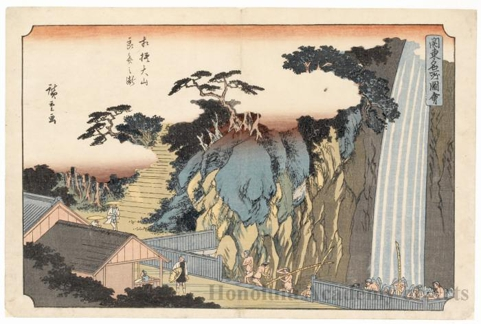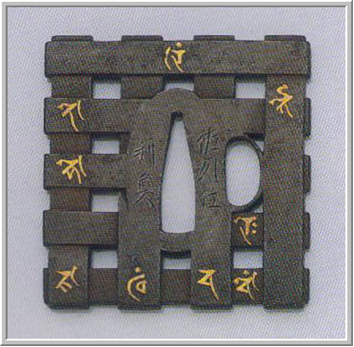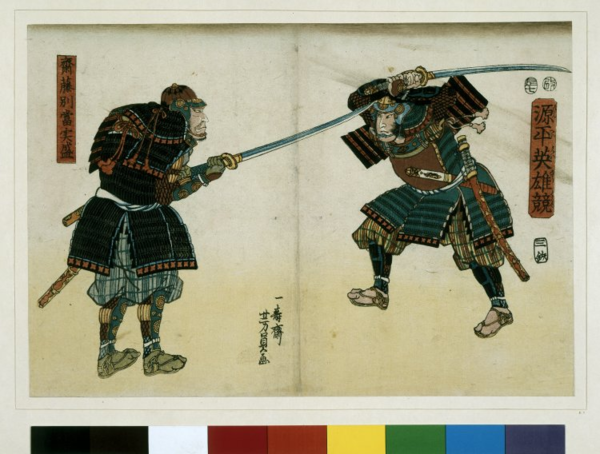-
Posts
499 -
Joined
-
Last visited
-
Days Won
33
Content Type
Profiles
Forums
Events
Store
Downloads
Gallery
Everything posted by Baka Gaijin
-
A Different view by Hokusai https://ukiyo-e.org/...c226711#&gid=1&pid=1 And one by Kuniyoshi https://ukiyo-e.org/.../bm/AN00695755_001_l
-
Probably, but you would have to do the 100 man Kumite three days in a row in order to be considered sincere enough to learn it!!!! Also Colin's point about pilgrims brings up Carmen Blacker's "The Catalpa Bow" an excellent study of Misogi and obscure Shamanistic practices .
-
Thats a really cool idea. Roben, not to be confused with Robun, which is a totally different Bowl of Miso.
-
When the force of the water is pounding down upon your head from on high, you don't want a dead sheep to come cascading down..... Actually happened in the 70's to a group of Welsh Kyokushin Karateka training under the Sgwd yr Eira. Real OSU!!!! Here's what it looks like today: http://www.ooooyama.com/taki.html
-
Should look like this As Piers says, there are issues with the paper and the foxing. Removal of the foxing would be expensive. However it is a really interesting study, and I am interested in what the items that look like extra long Bokuto are, and how they relate to Misogi 禊. Two are being carried up the steps and the other held onto under the waterfall.
-
Also five element theory ( Gogyou 五行 )
-

Identifying inherited sword
Baka Gaijin replied to James R's topic in General Nihonto Related Discussion
Cheers John, Thankyou for posting. One of the best demonstrations and explanations I have seen. I have a suspicion there may be an old school Makiwara somewhere off camera. -
Also have a look at the Inome piercings they look like "Love Hearts" not Boars eyes 猪目. I am drawn to the opinion of enthusiastic Hobbyist or Chinese manufacture.
-
This does not look old. The majority of "Helmet Breakers" that I have seen on the market over the years look to be Meiji Tourist items, in a few, (On close inspection) the points are malformed, almost blunted, indicating soft iron stock being used.
-
-
Ah, cheers for that, PNSS. I’d like to find out more about this Kuji Kamon if I make it out of here. OooH Matron!!!!!
-
Good morning, I recently discovered an extremely interesting Jingasa, which is currently with London dealer Malcolm Fairley. As I do not have permission to display the image, I will supply the link to his website: https://www.malcolmf...ered-leather-jingasa One of the Kamon (Maru Ni Kuji??) is a representation of the Kuji grid used in the esoteric practices contained within Shingon Mikkyo, and adopted by a range of Martial Traditions in Japan, of both Ancient and Modern persuasion. We also have this Talismanic aspect of nine lines in the Kaga Habaki. I was told that some stone masons would carve the Kuji grid on stones at important compass points for castle construction. https://en.wikipedia.org/wiki/Kuji-in#:~:text=Kuji no in (Hand seals of the Nine Syllables),-The Kuji-in&text=Kuji-kan (nine syllable visualization,the related incantations (mantra).
-
Here's another in the series. It really looks like the artist had observed practical swordsmanship tenouchi rather than fancy Kabuki style.
-
Hi Jon, It looks to be correct.
-
Good morning Old Bean "Was Genta left-handed or ambidextrous, I wonder?" He is holding in the correct manner, he's just let go of the right hand to give himself a cut advantage to the femoral artery area of his hapless chum's Sune. Perhaps try it with a stick next time you are kitted up, and you'll see how much distance you obtain by doing so.
-

Help! I shrunk my screen!!!
Baka Gaijin replied to Bruce Pennington's topic in Forum Technical Details and Maintenance
Hi Bruce Try control + to make larger control - to make smaller Whilst you are on NMB -

Tea Caddy Signed Shomi Eisuke from Kyoto, Meji Period
Baka Gaijin replied to Bob61's topic in Other Japanese Arts
Hi Bob, I believe that the textured finish on your caddy is referred to as Kabazaiku. The designer Christopher Dresser 1834 - 1904 used it in a number of silver designs in the late 19th Century, having encountered it and a number of the major Craftsmen of the time, during his formative trip to Japan. Here's what the Wiki has to say: In 1876, the British Government appointed Dresser as an emissary to Japan and sent him to visit Japan after he became associated with Japanese art in 1862, and made a number of Japanese business associates such as Kiritsu Kosho Kaisha, in the years following.[4] In four months in 1876–1877 Dresser travelled about 2000 miles in Japan, recording his impressions in Japan, its Architecture, Art and Art-Manufactures. He represented the South Kensington Museum whilst in Japan, and was received at court by the Emperor, who ordered Dresser to be treated as a guest of the nation – all doors were open to him. He was requested by the Japanese Government to write a report on 'Trade with Europe'. His pioneering study of Japanese art is evident in much of his work which is considered typical of the Anglo-Japanese style. -

Edo Period Corner Part II
Baka Gaijin replied to estcrh's topic in General Nihonto Related Discussion
Thank you Piers, Old Bean. As always a mine of useful information -

Edo Period Corner Part II
Baka Gaijin replied to estcrh's topic in General Nihonto Related Discussion
Good morning Old Bean, Can you please explain "under the legal length limit thus not needing registration". -
Here's another example from the Surimono set "Shisei no Uchi" Its format is Shikishiban (Roughly Square) 8 x 9 inches and often laid onto card. As its a Surimono set, examples are not going to be easy to source, due to the relativly low number of Surimono printed. Here however is another from the series: and another:
-
Maybe not secret clan markings, but sometimes individual talismanic markings such as Bonji or elements related to Shingon Mikkyo in the form of Grid markings or the 9 line Kuji markings on Kaga Habaki.
-
I do believe Piers has one of these gimbal lanterns and there is an illustration of how it works somewhere on NMB in his excellent Edo Period Corner articles.
-

Bronze Tray with Pegasus over Fuji San
Baka Gaijin replied to Baka Gaijin's topic in Translation Assistance
Thank You Steve, Very much appreciated. Your input has provided me with a jump off to discover Kobayashi Hideharu, the go or art name of Kobayashi Eishun, active mid 20th century. Winner of a number of awards for both metalwork and ceramics. Often Commissioned by Shobido, which is a high end shop in Osaka dealing in metalwork, jewellry, clocks, and flower vases. https://www.shobido.jp/en/history/ Also Commissioned by Yamaguchi Tankin Kabushiki Gaisha, a shop founded in Osaka specializing in the commissions of metalwork, clocks and silver items produced by leading artisans of the Meiji, Taisho and Showa period. -
Good afternoon I have a Bronze Tray which depicts Pegasus over a stylised Mount Fuji. It’s signed with three Kanji. I am thinking something to do with Mobil Oil in Japan. Opinions please.










